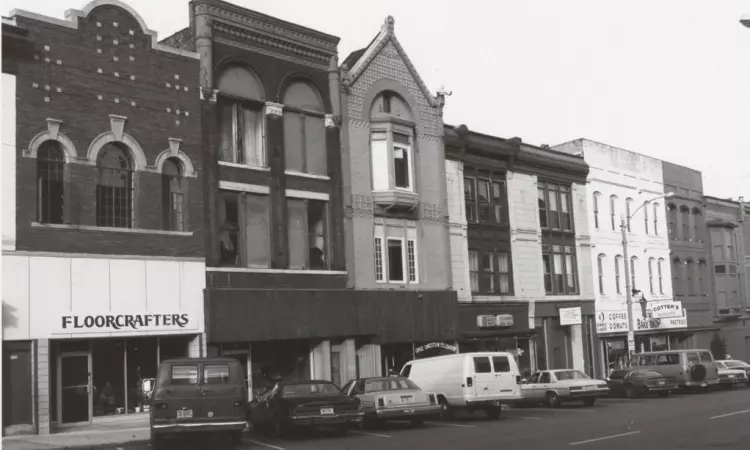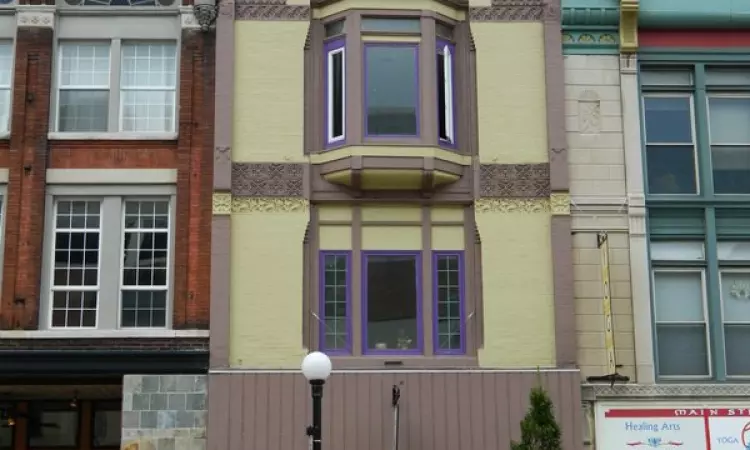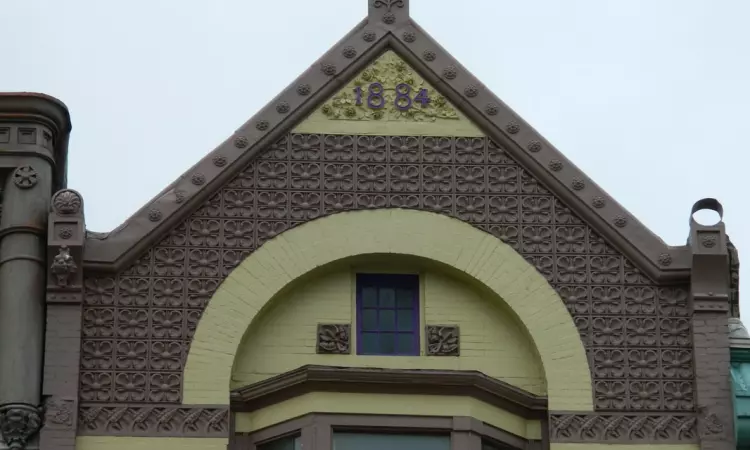Elder Building
Built: 1884
Architect: George H. Miller
George H. Miller
George H. Miller (b. May 7, 1856—d. March 6, 1927) grew up on a family farm as one of eight children. His education began in the public school system, and by the age of 15, Miller began his career under architects from the Rudolph Richter firm, which at that time was the only one in Bloomington. In 1874, Miller traveled to Columbus, Ohio, working as a draftsman with the Chicago-based firm Fredrick and Edward Bauman, and working alongside architect John Harris.
Returning to Bloomington in 1875, Miller launched a successful career as an architect. He designed prominent buildings such as the Oberketter, Corn Belt Bank, and Livingston buildings, which established him as a leading figure in Bloomington architecture. Miller innovated by introducing modern side lighting systems in school buildings, a technique still in use today.
Beyond architecture, Miller contributed to his community, serving as Bloomington city treasurer, third ward alderman, and chancellor of the local Knights of Pythias chapter. He married Rose Stautz in 1887 and had three children: Kenneth, Raymond, and Sallie. In his later years, Miller faced health challenges, including paralysis from a stroke, leading to his passing in 1927. He is buried in Evergreen Memorial Cemetery.
Style: Romanesque
Address: 416 N. Main St
Brief History:
1884 – The store building that cost the most to be constructed in the city was owned by Dr. William A. Elder.
2015- That Dapper Pet opens
Architectural Description:
Three-story brick masonry structure in the Victorian Romanesque style.
Faced with red pressed brick, terra cotta , and molded brick.
First floor of modern aluminum and glass, and stated the original name "Union Foundry."
The upper floors were composed of single bay windows, topped by large molded brick. Additionally had a relieving arch set in a tall Norman-style gabled parapet.
Has a double window with Lake Superior stone sills and headers.
A medieval vine and leaf motif of terra-cotta separates the second and third stories.
Has a gabled parapet trimmed with sheet metal and decorative tiles.


